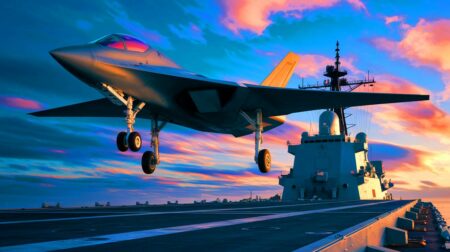| IN A NUTSHELL |
|
The realm of aviation is on the cusp of a groundbreaking transformation, thanks to a significant technological leap achieved by Chinese researchers. With the development of a hypersonic engine, the potential to drastically reduce flight times is within reach, heralding a new era in air transport. This advancement not only promises to revolutionize the way we travel but also poses intriguing implications for global economic and strategic landscapes.
China’s Hypersonic Engine: A Technological Leap Forward
Chinese scientists have taken a monumental step in aeronautical technology with what is being called the world’s most powerful hypersonic engine. Reported by the South China Morning Post, this engine can propel an aircraft to the dizzying speed of Mach 16, cruising at an altitude of nearly 98,425 feet. Detailed insights into this groundbreaking technology were published in the Journal of Propulsion Technology in China.
Such speeds, previously reserved for theoretical discussions, are now becoming a tangible reality. This hypersonic capability signifies a massive leap forward, positioning China at the forefront of the hypersonic race. The implications of this engine extend far beyond civil aviation, potentially reshaping military strategy and national security paradigms worldwide.
Technical Specifications and Global Implications
The engine, developed by the Beijing Institute of Power Machinery, employs advanced technology that ensures efficient propulsion at incredible speeds. This innovation has the potential to not only revolutionize civilian air travel but also to yield significant advantages in military applications. The economic and strategic implications are vast, impacting global trade routes and military logistics.
Below is a table summarizing the key specifications of this hypersonic breakthrough:
| 🛠️ Specification | Details |
|---|---|
| ⚙️ Engine | Hypersonic, Mach 16 |
| 🌍 Range | World tour in 2 hours |
| 📏 Altitude | 98,425 feet |
With such transformative potential, the hypersonic engine could redefine international travel and commerce, making once-lengthy flights a matter of mere hours and altering the dynamics of global power.
Overcoming Technological Challenges
Despite this advancement, several technological hurdles must be cleared to make this innovation viable. Managing heat at hypersonic speeds remains one of the primary challenges. The intense temperatures generated by such speeds can compromise the structural integrity of the aircraft, necessitating advanced materials and cooling systems.
Additionally, the environmental impact and production costs of these engines require careful consideration. Researchers are diligently working to refine these technologies, striving for both ecological sustainability and economic feasibility. Key points to consider include:
- Achieving Mach 16 speed
- Flight altitude reaching 98,425 feet
- Potential impact on civilian and military travel
This breakthrough in hypersonic engine technology offers a glimpse into the future of air transportation, raising crucial questions about its integration into daily life and international travel dynamics. How will this innovation reshape our daily lives and global travel in the coming years?
Did you like it? 4.4/5 (25)









Is this jet going to be affordable for regular people or just for the ultra-rich?
propaganda. Fake news.
Wow, traveling the world in 2 hours sounds like something out of a sci-fi movie! 🚀
What about the issue of noise pollution from these jets? That’s got to be insane at those speeds! 🔊
Are they planning to use these engines for military purposes as well? Sounds a bit scary.
I’ll believe it when I see it. Hypersonic tech has been “just around the corner” for years now.
China can’t build it’s own passenger jets. Take the Comac 909 and compare that to a DC-9 or Boeing 717. Then compare the 919 with an Airbus A319. They even use GE engines. How are we supposed to believe China has built the fastest passenger jets ever?
This doesn’t say anything about an actual hypersonic jet being made yet, just that the engines have. The title is misleading.
Is there a frequent flyer program for this? 😜
How soon can we expect these jets to be operational for commercial flights?
Thank you for the detailed article! It’s fascinating to see how far technology has come.
Can this hypersonic engine be retrofitted to existing aircraft or is it only for new builds?
If this becomes a reality, it could completely change the dynamics of global trade. 📈
What happens if there’s turbulence at Mach 16? 🤔
Are there any Western countries close to developing similar technology?
The heat management challenge sounds daunting. Hope they have a plan for that. 🔥
Is this real life or am I reading a plot for the next blockbuster action movie? 🎬
This is the future of travel! Can’t wait to see it in action. 🛫
How are they planning to manage the environmental impact of these hypersonic flights? 🌍
How does this speed compare to current fastest passenger jets?
Are there any known health risks to passengers traveling at such high speeds? 😨
Thanks for the update, but I’m still a bit skeptical about the practicality of this tech.
Wow, the future is here! But what about the ticket prices? 💸
This sounds too good to be true. I wonder what the catch is.
Will they have to build special airports to handle these hypersonic jets?
Is it possible for these speeds to become the norm in the next decade?
I’m concerned about the potential military applications of this technology. 🤔
When can we expect to see a prototype of this hypersonic jet?
This is incredible! But I hope the safety measures keep up with the speed. 🤞
Imagine flying to another continent for lunch and being back for dinner! 😲
Will they serve peanuts at Mach 16? 😂
Thank you for sharing such an exciting development in aviation technology!
The amount of of hydrogen needed to fuel this sucker would dwarf that of the Hidenberg Blimp. They stopped the Concord because of sonic bomnsxst Machv2. March 16? Boom boom and more booms